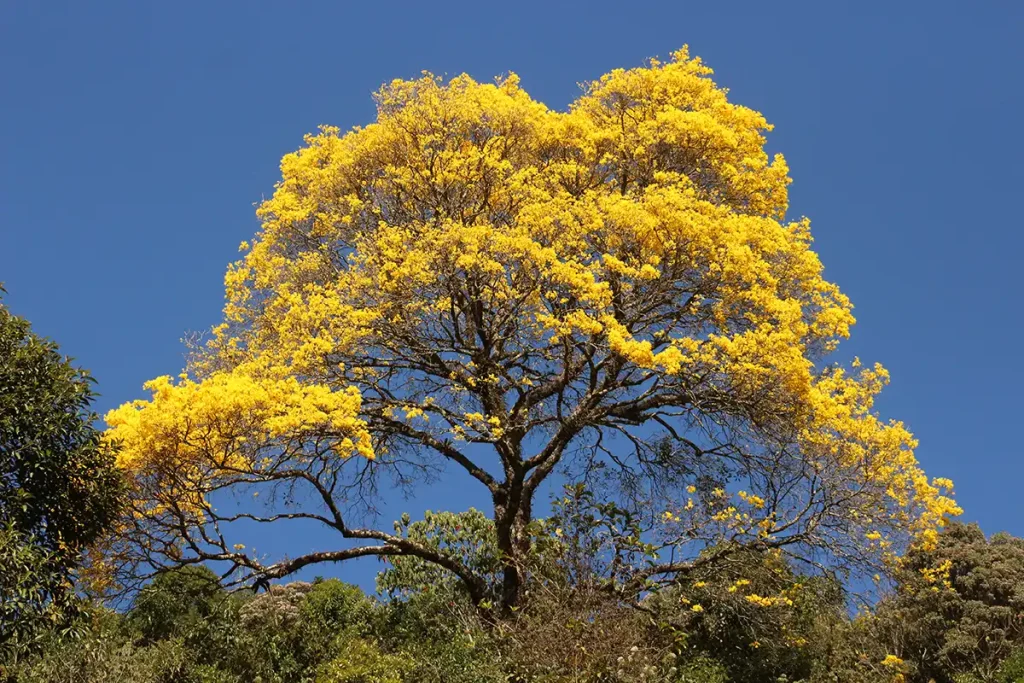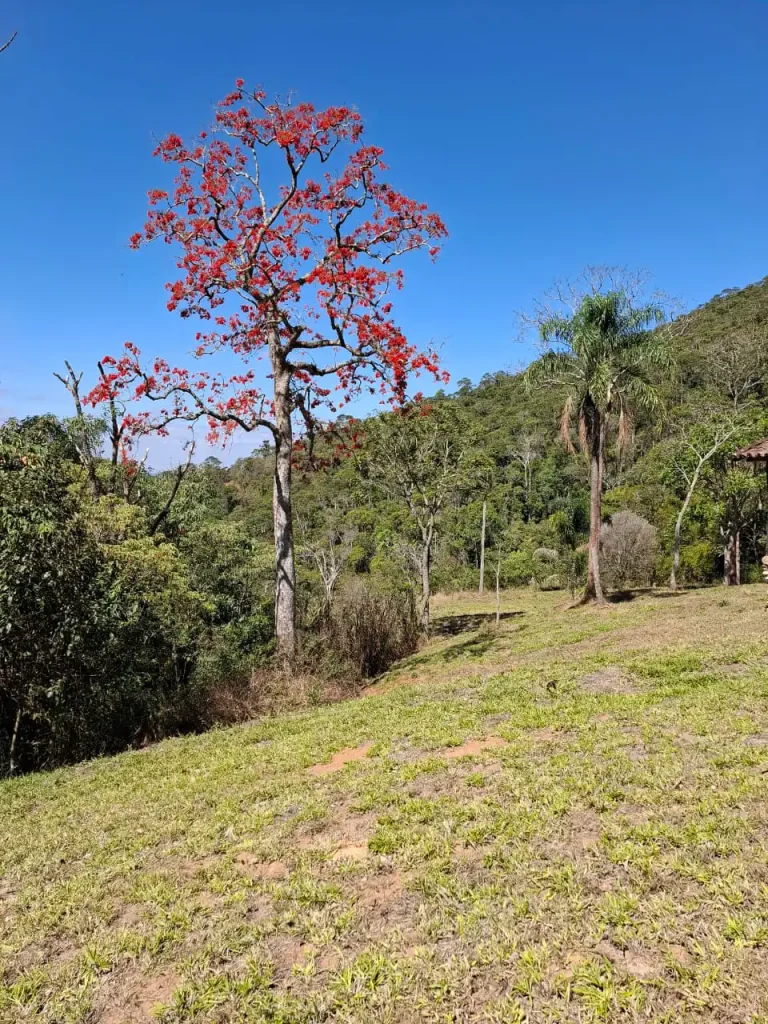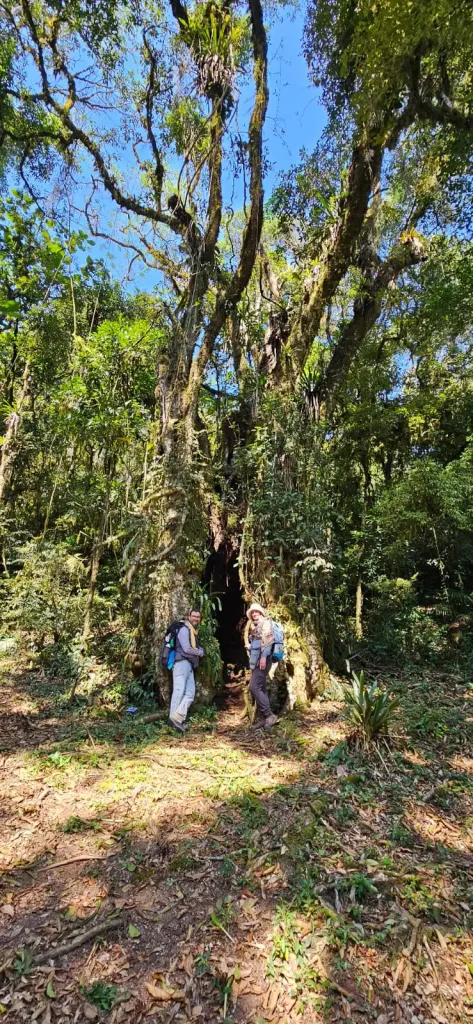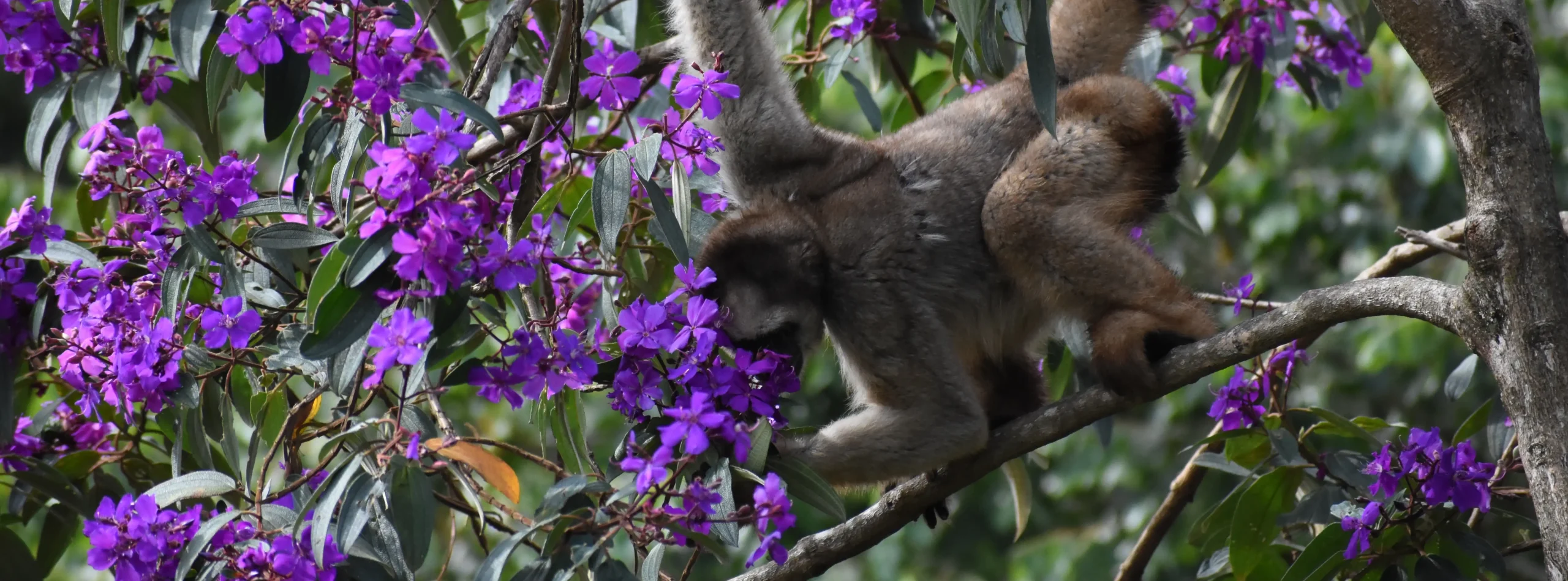Walking along the Ibiti trails is also a journey through time: each tree tells a story of regeneration, shelter and beauty. Their preservation begins with knowledge and respect for the environment. Ibiti's trees hold legends, meanings and are true guardians of the forest, providing shade, shelter and food for all living beings. And, of course, they are enchanting!
Researchers who have been here have cataloged hundreds of species, including ipê-amarelo, quaresmeira, paineira, embaúba, mulungu, candeia, among many others. Many of these trees are marked with signs, making it easy to recognize them during your walk.
Others are the protagonists of stories told by guides and local residents. Here are some of the most emblematic trees within the Ibiti Projeto territory, all recorded by the passionate eyes of visitors and project collaborators!
Yellow Ipe
Native to South America and widespread in Brazil, the ipê-amarelo is celebrated for the exuberance of its flowers which bloom at the end of winter, making it a true national symbol. Between August and September, it colors the forests of Ibiti and enchants visitors. The flowers, considered edible, are used by some chefs in gastronomy. And they attract various insects, bees and birds, especially hummingbirds, which play an essential role in pollination.

Lenten tree
An ornamental tree native to Brazil, especially the Atlantic Rainforest. It usually blooms during Lent, which gives it its popular name, attracting attention in the middle of the forest with its showy purple or pink flowers.

Araucaria
At the Cruzeiro viewpoint, 42 Araucaria saplings have been planted, forming the symbol of peace. This species, which stands out in the landscape on the way to Areião, has existed on the planet for around 200 million years. It flowers between October and December. It produces pine cones that contain the pine nut, which ripens between April and June and serves as food for animals, such as the blue jay, and humans.

Jequitibá
At Ibiti, two saplings were planted: one at Engenho Lodge and the other at Vila Mogol, in front of the Yucca restaurant. An Atlantic Forest heritage tree, the jequitibá - which can live for more than 500 years - reflects Ibiti Projeto's commitment to longevity and sustainability. It is among the tallest trees in the Brazilian flora, reaching heights of 50 to 60 meters. It provides shelter and food for various species of fauna, which take advantage of its fruit and the protection of its high branches.

Mulungu
Present in several areas of Ibiti, this tree is endemic to Brazil and is known for its medicinal properties as well as its beauty. Also called parrot's beak, it is traditionally used as a natural tranquilizer and can be found in teas, capsules or tinctures. Between June and September, it blooms in vibrant red tones while shedding its leaves, attracting mainly hummingbirds.

Sapopema
(Tree of the Seven Horsemen)
A sapodilla tree more than 350 years old with a hollow trunk arouses the curiosity of those who pass by on the trail in the middle of the forest near Garnet. Legend has it that, during a heavy storm, seven travelers found shelter inside, arousing curiosity about the thickness of its hollow trunk. Its fruits are woody capsules that open to release winged seeds.

Candeia
Native to the Cerrado and Rupestrian Fields, the candeia has resistant and aromatic wood, rich in essential oil used in folk medicine and the cosmetics industry. Its white or yellowish flowers bloom between March and May.

Juçara
The juçara palm is essential for forest regeneration, but is threatened by palm heart extraction. In Ibiti, its fruits are used to produce juçaí (similar to açaí), jams and ice cream, while the seeds are reintroduced into the wild, encouraging conservation. In Vila Mogol, several seedlings were planted with the involvement of the community, which also takes part in the celebration of the Juçara Festival.

Painted wood
Between the statues and the Garnet, there is a majestic specimen of the millet tree, whose trunk and flowers draw attention to the landscape. It blooms profusely in summer and fall. The fruit is large and releases silky millet when it ripens.





